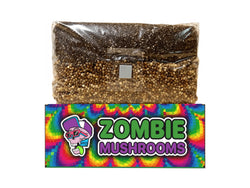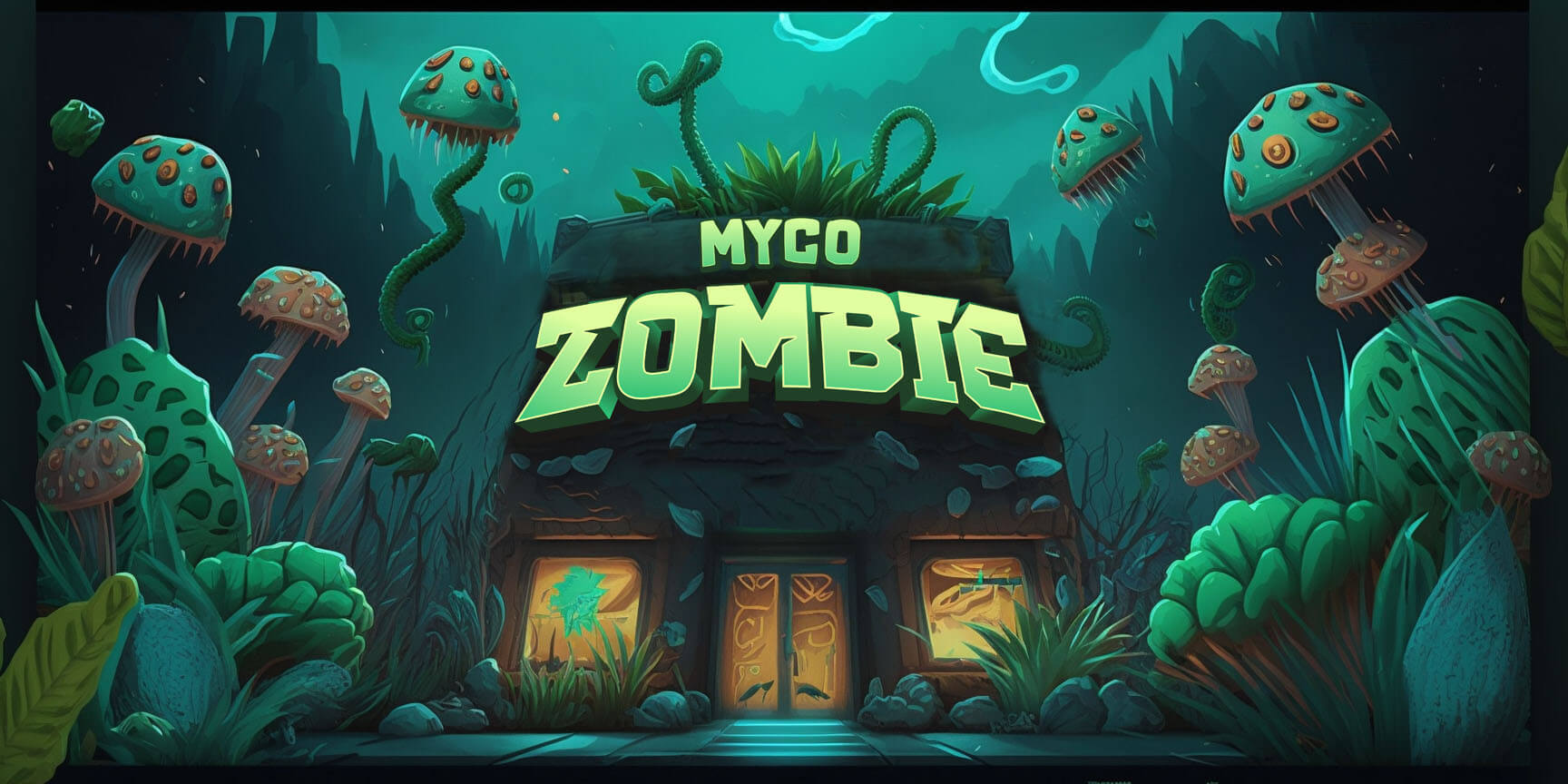⬇️ Prefer to listen instead? ⬇️
- A 2019 FDA designation marked psilocybin as a Breakthrough Therapy for depression.
- Some U.S. jurisdictions have decriminalized magic mushrooms, opening doors for therapeutic use.
- Potency among psilocybin species varies up to 1.78% psilocybin by dry weight.
- Misidentification of wild mushrooms can lead to fatal poisoning from lookalike species.
- Over 180 known psilocybin species exist across several genera, with Psilocybe cubensis popular for cultivation.
Psychedelic Mushrooms: What Types Are There?
Psychedelic mushrooms—commonly known as magic mushrooms—have long played roles in cultural ceremonies, healing rituals, and altered states of consciousness. With renewed scientific interest in their therapeutic potential—especially in treating mental health conditions—these fungi are now under the microscope from researchers, enthusiasts, and cultivators worldwide. This guide breaks down the main psilocybin-containing species, how to identify them, where they grow, and how to grow them yourself safely and legally.
What Makes a Mushroom Psychedelic?
The defining feature of psychedelic mushrooms is the presence of naturally occurring psychoactive compounds—primarily psilocybin and psilocin. Other less common but relevant compounds include baeocystin and norbaeocystin. Once ingested, the body converts psilocybin into psilocin, which then acts on serotonin (5-HT) receptors in the brain, most notably the 5-HT2A receptor.
This interaction can produce a range of psychedelic effects, including:
- Visual distortions and hallucinations
- Altered perception of time
- Emotional amplification
- Deep introspection and spiritual experiences
Unlike synthetic psychedelics like LSD or pharmaceutical antidepressants, magic mushrooms offer a natural way to change how you think and feel. Their effects are typically shorter than LSD (Liberty Caps may last 4–6 hours; Cubensis up to 6–8), but they can lead to changes in mood, perspective, and behavior that last.

Classification by Genus: Overview of Psilocybin Mushroom Genera
Over 180 psilocybin-containing mushrooms have been documented, with the majority falling into a few primary genera. Understanding these categories can help enthusiasts and foragers avoid confusing magic mushrooms with inedible or toxic varieties.
Psilocybe
This is the most common and widely known genus, including species like Psilocybe cubensis and Psilocybe semilanceata. These mushrooms typically have brownish caps, purple-brown to black spore prints, and often bruise blue when injured—a result of psilocin oxidation.
Panaeolus
Species in this genus such as Panaeolus cyanescens and Panaeolus tropicalis are known for their high potency, even though they are small. Often found in grazing lands and dung-rich soils, they work fast and are valued in equatorial areas.
Gymnopilus
These larger, rusty-orange mushrooms often grow on decaying wood. While only a few species like Gymnopilus luteofolius are psychoactive, their size and look are clear. Some species are bitter-tasting and not good to eat.
Pluteus
Less common, but includes interesting species like Pluteus salicinus. These mushrooms are typically found growing on decaying hardwood, especially in European forests.
Inocybe & Conocybe
These genera contain a mix of hallucinogenic and toxic species—identifying them is very risky for people who aren't experts. While some Conocybe species may contain psilocybin, others, such as Conocybe filaris, can kill you because they have deadly amatoxins.

Top Psilocybin Mushroom Species to Know
Every psilocybin mushroom species has distinct features, growth patterns, and levels of active compounds. Below are some of the most well-known species:
Psilocybe cubensis
- Appearance: Golden to caramel convex caps, thick white stems, bruises blue when handled.
- Habitat: Common in tropical to subtropical areas, often growing in cattle dung.
- Potency: Moderate (~0.6–0.9% psilocybin). Popular because they are easy to grow and identify.
Psilocybe semilanceata (Liberty Cap)
- Appearance: Tall and slender with a pointed, bell-shaped cap. Sticky when wet.
- Habitat: Found in temperate grasslands, meadows, and old pastures in Europe and North America.
- Potency: High for its size (~1.0–1.7% psilocybin). Small but strong.
Psilocybe cyanescens (Wavy Cap)
- Appearance: Brownish cap with wavy edges, often found in wood chips and mulch.
- Habitat: Grows a lot in urban coastal areas, particularly the Pacific Northwest.
- Potency: Strong (~0.85–1.3% psilocybin).
Psilocybe azurescens (Flying Saucer Mushroom)
- Appearance: Broad caramel-colored cap, thick white stem, bruises intensely blue.
- Habitat: Coastal dunes and decaying wood along the Pacific Northwest coast.
- Potency: Extremely high (~1.78% psilocybin).
Panaeolus cyanescens (Blue Meanie)
- Appearance: Thin white to gray cap, bell-shaped, with blue bruising.
- Habitat: Tropical pastures, growing well in dung-rich soils.
- Potency: Very strong (~0.6–1.2% psilocybin), effects start quickly.
Gymnopilus luteofolius
- Appearance: Orange caps with rusty gills and often scaly surface, grows on wood.
- Habitat: Found on stumps and logs in temperate forests.
- Potency: Varies, but contains psilocybin and other indole alkaloids.
Pluteus salicinus
- Appearance: Grayish-blue cap, commonly bruises blue, delicate and small.
- Habitat: Prefers wet hardwood places across Europe.
- Potency: Moderate.

Potency Comparison: Psilocybin Content by Species
The strength of magic mushrooms is typically measured as a percentage of psilocybin by dry weight. Besides species, environmental factors and genetics greatly influence potency.
| Species | Avg. Psilocybin Content by Dry Weight | Notes |
|---|---|---|
| Psilocybe azurescens | ~1.78% | Strongest known wild species (Gartz, 1994) |
| Psilocybe semilanceata | ~1.0–1.7% | Small but strong |
| Psilocybe cyanescens | ~0.85–1.3% | Common in urban areas |
| Panaeolus cyanescens | ~0.6–1.2% | Fast-acting and potent |
| Psilocybe cubensis | ~0.6–0.9% | Most popular, easy to grow |
| Panaeolus foenisecii | <0.1% | Often mistaken for others; lacks psilocybin |
While blue bruising is a helpful sign that psilocybin is present, it doesn't tell you exactly how strong a mushroom is. You need lab tests for precise chemical details.

Magic Mushroom Identification 101
Identifying mushrooms correctly is very important before you use any. Many psilocybin mushrooms have toxic lookalikes. Use the following features to identify species safely:
Key Identification Cues
- Cap: Often changes color as it dries, bell-shaped, or cone-shaped in young ones.
- Gill Color: Changes from light gray to deep purple-brown as spores grow.
- Spore Print: Lay the cap gills-down on a white and black piece of paper. Psilocybin mushrooms produce dark purple-brown to black prints.
- Bruising: Blue or blue-green color where you press or cut it is a strong sign of psilocybin.
- Smell: Earthy or flour-like smell is common among Psilocybe species.
Dangerous Lookalikes
- Galerina marginata: Contains amatoxins; looks similar to Psilocybe species but is deadly poisonous.
- Omphalotus species (false chanterelles): Glow in the dark, are toxic, and don't cause hallucinations.
- Lepiota: Mushrooms that harm others and can kill you if you identify them wrong.
When you're not sure, ask expert mushroom people, check online forums like The Shroomery, or use mushroom apps that let you identify species with pictures.

Geographical Distribution and Habitat Breakdown
Each type of magic mushroom prefers different places to grow. Knowing where and when to find them can help you be successful and stay safe.
By Species:
- Psilocybe cubensis: Grows in tropical regions, especially Southeast Asia, Central and South America, and the southern U.S.; often found in cattle dung.
- Psilocybe semilanceata: Found in meadows and pastures in Europe, Canada, and the U.S.
- Psilocybe cyanescens and azurescens: Grow well in the Pacific Northwest, including Oregon and Washington, often appearing in garden beds with mulch or decaying wood.
- Panaeolus cyanescens: Found in Hawaii, Southeast Asia, South America, and southern U.S. pastures.
- Pluteus salicinus: Found here and there across wet hardwood forests in Europe.
- Gymnopilus species: Spread across North America and Europe, growing on logs and forest debris.
Fruiting Season
Most psilocybin mushrooms grow their fruiting bodies in autumn (September to November), but tropical species like P. cubensis may appear all year in humid places.

Cultivation Basics: Growing Psychedelic Mushrooms at Home
Growing psilocybin mushrooms at home is both worthwhile and saves money—when it's legal. Growers carefully copy the best conditions these fungi need to grow.
Legal Reminder
Always check the laws where you are—your city, state/province, and country. In some parts of the U.S., growing is allowed for personal or therapeutic use.
Requirements
- Spore Syringes: Start with a supplier you trust—Zombie Mushrooms offers verified spores and kits for beginners.
- Substrate Preparation: Popular growth materials include brown rice flour (BRF), rye grain, or coco coir/vermiculite mixes.
- Sterilization: Use pressure cookers or autoclaves to clean the growing material, stopping bad stuff from growing.
- Incubation: Spores grow best around 75–80°F.
- Fruiting Chamber: An environment with high humidity (90% RH) and indirect light helps growth. Use perlite or automatic kits to keep conditions right.
Zombie Mushrooms’ grow kits are a great choice for new growers. They offer pre-sterilized supplies, spores, and step-by-step guides.

Safety and Legal Considerations
Even though more people are interested, magic mushroom legality is very different around the world.
Legal Status by Region
- United States: Illegal at the federal level, but some cities have made them less punishable by law (Denver, Oakland, Seattle). Oregon has set up rules for psilocybin therapy.
- Canada: Illegal, but there are exceptions for medical and research reasons.
- Brazil & Jamaica: Psilocybin is not controlled by law; retreats and therapy centers are open.
- Europe: Laws vary; Netherlands allows selling psilocybin in truffle form, while most EU countries ban it.
Health & Safety
- Mental Health Screening: Don't use if psychosis or bipolar disorder runs in your family.
- Set & Setting: The place you are in and how you feel emotionally have a big impact on what happens.
- Dosing: Start with a small amount; microdosing (0.1–0.3g dry weight) is becoming popular for focus and better mood.
- Harm Reduction: Have a sober person with you, don't mix with other substances, and stay hydrated.

Frequently Asked Questions About Magic Mushroom Types
Can mushrooms be strong without bruising blue?
Yes. No bruising doesn’t mean no psilocybin—it might be harder to see or broken down.
Are growing mushrooms more legal than having them?
It depends on national and local laws. In some areas, spores are legal but growing them is not.
Why do growers like P. cubensis the most?
They are easy to grow, grow quickly, and have predictable strength, making them good for beginners.
How long do effects last?
Usually 4–8 hours, depending on the species, dose, and how your body processes things.

Current Research and Therapeutic Potential
New studies are changing how mental health practitioners view psychedelic substances. Using psilocybin in controlled, therapy settings has shown improvements in:
- Depression that doesn't respond to other treatment
- OCD and anxiety disorders
- Stopping smoking and alcohol use
- Distress at the end of life
Research from Johns Hopkins, Imperial College London, and MAPS consistently backs safe psilocybin-assisted therapy as a future treatment in psychiatry. The U.S. FDA called psilocybin a “Breakthrough Therapy” for depression in 2019. This shows how promising this area is.
Final Thoughts
Understanding the different kinds of psychedelic mushrooms—how to identify them, their strength, where they grow, and how to grow them—opens doors to personal growth and scientific study. Whether you’re microdosing for focus or exploring natural substances for spiritual insight, being safe, getting educated, and following the law are musts.
If you’re ready to start learning about mushrooms, Zombie Mushrooms provides everything from safe starter kits to detailed guides for anyone interested. Take the first step toward understanding more—backed by science, tradition, and community.




